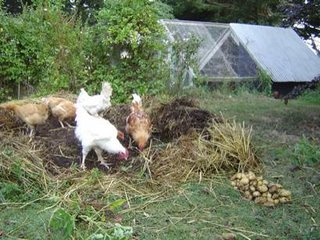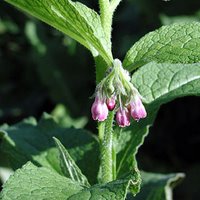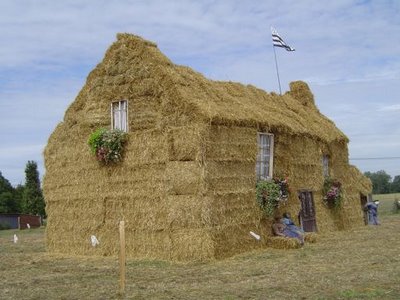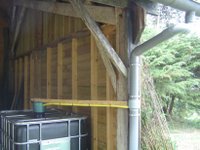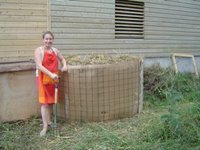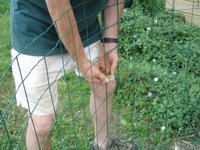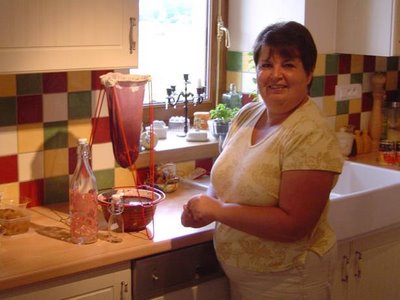
Foraging – Part 1. Foraging experts would probably say that you can find useful stuff to eat the year round, but this time of year seems especially fruitful. Apart from all the wild goodies, several of our neighbours’ fruit trees are heavily laden and we’ve been invited to help ourselves; our fruit bowl is currently overflowing with delicious plums and mirabelles. Our two references are the classic by Richard Mabey, Food for Free and Wild Food by Roger Phillips.
I was doing some woodwork outside when Gabrielle came up to me with what appeared to be a four-leaved clover. I thought she was going to tell me what good luck we apparently have in store but no, it was apparently a sorrel and was edible and delicious, so she convinced me. She’d identified the plant via the Collins Complete British Wildlife and remembered from one of the foraging books that sorrel was OK to eat. I looked disapprovingly at this not-a-four-leaved-clover but she was very persuasive and so I tried it: a strong taste, a bit citrusy and not unpleasant but perhaps an acquired taste.
At the end of our working day, enjoying an apero, I looked up sorrel in Phillips book and saw a picture of a plant very different to the one I’d eaten! Thinking of scare stories with people eating mushrooms, I wondered whether I’d see the next morning and whether I should call an ambulance. Looking at the Collins Wildlife Guide I saw that what I’d been fed was wood sorrel! Happily, when I crossed referenced with Mabey’s book, I found that wood sorrel is also edible … phew!
We never got round to making elderflower champagne when the flowers were out—although we did make elderflower fritters a couple of times—so, with the trees heavy with juicy purple berries, we wanted to do something. Carol, one of our neighbours and the “Delia Smith” of St Maden, was willing to try; our only contribution was to lend her our foraging books with their recipes. The photo is of Carol next to a device straining out the juice, ready to turn into elderberry syrup, which can be everything from a cold remedy to something you can add to wine as an aperitif.


